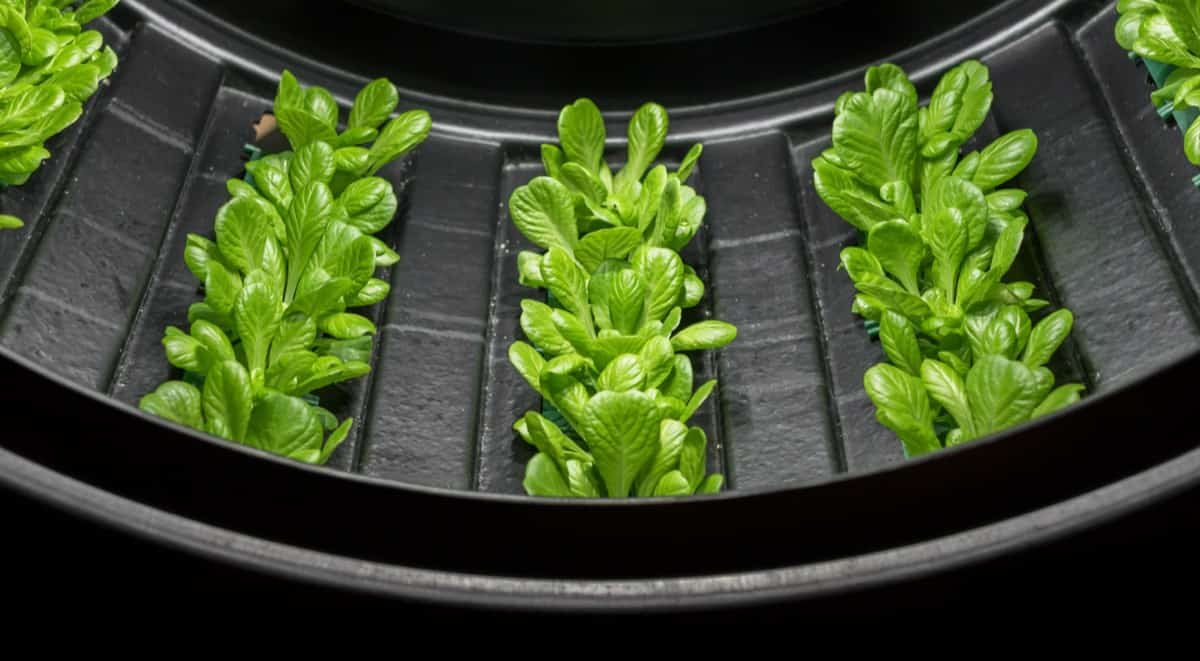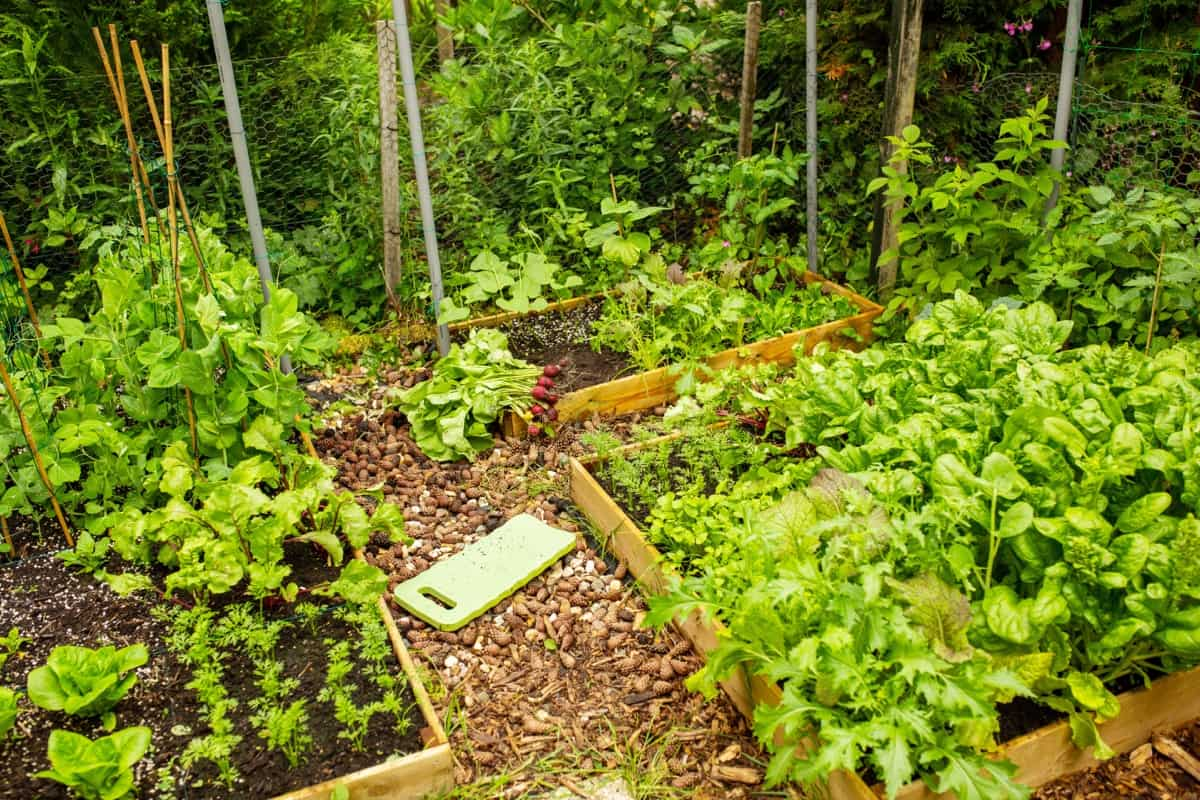There are many different ways to use a small garden space if you aren’t sure how to maximize your homegrown vegetables. While large outdoor gardens yield larger crops, you don’t need a large garden bed to grow healthy vegetables in a small space. You can grow your favorite tasty vegetables in a small footprint with the right containers, soil, watering schedule, and sun exposure.
- Sunlight: For vegetables to grow well, they need at least six to eight hours of direct sunlight daily. Plants will be stressed without sunlight, and they won’t grow properly. A few vegetables can grow in a light shade like leafy greens, broccoli, etc. even if the site lacks sunlight.
- Water: Regular watering is necessary for vegetables. Otherwise, they will not be able to fill it out. Tomatoes, for instance, can crack open if suddenly filled with water after struggling without it. Installing a drip irrigation system is easy and saves water by directly watering the roots (less water is lost to evaporation).
- Soil: Organic matter is necessary for the growth of vegetables. Fertile soil is essential for the growth of all plants, but even more so with vegetables because soil quality affects their taste.
Best 18 Tips for Vegetable Gardening in Small Spaces
Use Closer Spacing
Some crops thrive when spread out, and others do well when grown close together and benefit from tight quarters. You can reduce the spacing of your crops for higher yields if your soil is healthy and you have ample irrigation. You can also reduce weed pressure by spacing your crops closer since weeds have fewer places to grow.
Minimalist Gardening
Gardening in small spaces requires a minimalist mindset. In the same way that minimalists don’t keep unused or unnecessary items around their homes, small-space gardeners shouldn’t waste their time growing crops they don’t have. The majority of gardeners waste space growing crops they do not even like. While lettuce and radishes are easy to grow and small, that doesn’t mean you enjoy them in the kitchen.
Better Drainage
A fertile, well-drained soil allows crops to be spaced closer together and produces more in a smaller area. Raised beds have improved depth, ensuring water flows through the soil instead of pooling. In this way, you won’t have to worry as much about disease or waterlogging.
Use Windowsill Gardens
Growing edible plants on a windowsill is an easy, low-space option for frequently harvested plants like herbs and lettuce. Gardeners with limited space don’t have to limit their gardening to windowsills: Pot some herbs indoors, provide sufficient sunlight and water, and extend the growing season.
In case you missed it: Mastering the Art of Container Gardening: Growing Fruits and Vegetables Successfully in Pots with Simple Steps

Try Trellis Vining Crops
Some plants are simply not meant to be grown on the ground. It is natural for watermelons and cucumbers to ramble along the soil. Plants that grow indeterminately (vines) are much better suited to trellising. With trellising, space is saved, yield is higher and distance is reduced.
Add Hanging Baskets
Hanging baskets can be filled with flowers or crops to add more personality and yield potential to your patio, fenceline, arbor, gazebo, or house. You can enjoy a fresh harvest in a limited amount of space by growing tomatoes, chilies, salad greens, and aromatic herbs in hanging baskets. The cherry tomato variety is ideal for hanging baskets.
Use a Balcony or Patio Garden
Balcony gardens are great because they don’t require any ground space. The balcony could be used to grow food. Because everything is growing in a container and installing an irrigation system is difficult, you will likely need to hand water your veggies daily. You can help your plants by using high-quality potting soil and monitoring their water level.
Grow Vegetables Where Places You Can’t Utilize them Normally
Don’t let the small space keep you from growing your favorite vegetables. You can hang vegetable boxes on your balcony or deck railings to use unused space. Window boxes can also be added to the windows to increase the space.
Choose Fast-Growing Crops
A small space requires patience, but time is of the essence. You can drastically increase your yields by combining quick-maturing varieties, intercropping, and succession planting. There are a lot of delicious veggies you can grow in and out of the garden for maximum yields.
Growing Vegetables in Containers
Vegetable container gardening allows you to control your edible plants’ soil, sunlight, and growing conditions. In addition, you can fit edible gardening into the smallest spaces by placing containers on your patio, balcony, front steps, and along the foundation of your house.
Don’t Forget the Borders
You should use as much of your garden edge as possible. This principle applies whether you have a fence, a wall, or narrow border beds. A companion planting bed can be created along the side of the garden for perennials. In addition to pollinating your crops, lavender, bee balm, rosemary, and perennial herbs can also help control pests.
GroW Vegetables Vertically
You can save space in your garden beds by growing vegetables vertically. Choose compact varieties that can be trained to grow vertically on support structures if you choose to grow various vegetables. Pole beans, for example, take up less space than bush beans. Despite their aggressive nature, the vine cucumbers and squash occupy less space than their bush-like relatives.
In case you missed it: Aeroponic Vertical Farming: A Step-by-Step Guide for Beginners

Try Unique Space Saving Ideas
Growing some of your favorite herbs in plastic bottles is even possible. In addition to towers and ladder planters, you can also use pallet planters and tin cans hanging from the wall to grow vegetables. Salad greens can be grown on portable tables that can be moved around the house as needed.
Don’t Forget to Prune
One of the most overlooked ways to maximize harvests in a small space is to prune. Unpruned crops like tomatoes and cucumbers can occupy much space.
Companion Planting
Companion planting, also called interplanting or intercropping, involves growing multiple crops in the same area. In addition to maximizing your garden space, this ecological technique also adds fertility, pollination, pest control, and biodiversity to your crops.
Succession Planting
It is a valuable technique for any vegetable garden, large or small, but it is even more useful when space is limited. During the growing season, succession planting involves reseeding fast-growing crops every two to three weeks. Especially useful with crops prone to exhaustion when overproduced, such as beans, zucchini, and lettuce. You can produce enough food if you plant in succession.
Plant in Raised Beds with Rich Soil
Rather than growing plants in a single file, in long, parallel rows, think about growing them in groups. When you use raised beds and square-foot gardening, you can grow up to 10 times as much produce in the same space. Raised beds are the fastest way to get that deep layer of fertile soil. Planting in raised beds can yield up to four times more than planting in rows. Their loose, fertile soil and efficient spacing are responsible for this. You can grow more plants if you use less space for paths.
In case you missed it: How to Raise and Care for Pygmy Goats: DYI Guide for Beginners

Grow Vegetable Side by Side
Herbs such as basil would greatly benefit from the hot afternoon sun and look great beside tomatoes under their shade. You can also grow early-harvest vegetables like radishes, peas, and spinach alongside slow-growing plants like pepper or broccoli. The space will not be occupied until spring veggies are harvested.
Conclusion
Urbanization has led to a growing number of people living without gardens and not even having an outdoor space to call their own – even a balcony. Even urban environments can grow flowers, herbs, and vegetables with little knowledge and ingenuity. People often cite a lack of space as the primary reason for not having a garden.
- Ultimate Guide to Ossabaw Island Hog: Breeding, Raising, Diet, and Care
- Ultimate Guide to Juliana Pig: Raising Facts, Size, Diet, Care, and Lifespan
- Raising Lleyn Sheep: Disadvantages, Price, Uses, Characteristics, and Care
- Ultimate Guide to Meishan Pig: Breed Facts, Breeding, Raising, and Care
- Ultimate Guide to Teacup Pigs: Raising, Diet, Lifespan, Cost, and Care
- Guide to Raising Poll Dorset Sheep: Facts, Profile, Characteristics, Uses, and Care
- Ultimate Guide to Bighorn Sheep: Characteristics, Diet, Lifespan, Breeding, and Lifecycle
- Ultimate Guide to Raising Katahdin Sheep: Farming Facts, Breed Profile, Uses, and Care
- Ultimate Guide to Raising Oreo Cows: Belted Galloways Farming Facts, Profile, Uses, and Care